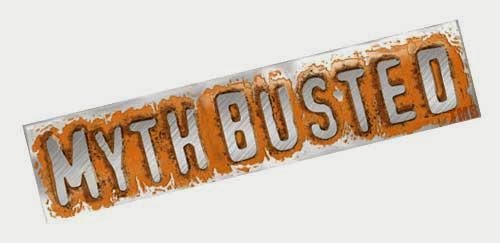Have YOU been misinformed?
Let’s clear up the most common car insurance MYTHS,
that can prevent YOU from experiencing unnecessary stress. . .
All of us writing this article are chiropractors and collectively have helped thousands of people recover from injuries caused by motor vehicle accidents. While working with patients, it’s not uncommon for table-talk to go a little sideways and move off the path of health to discussions about car insurance, rates, etc.
Over the years, we’ve all noticed quite a bit of confusion and misinformation dispelled through, “common knowledge.”
How many of these do you believe to be true?

1. The color of my car matters.
Red cars look cool, but they DON’T raise insurance premiums as is widely believed. Car insurers care more about  the make and model, year, body style, engine size and, in some areas, location (street parking versus driveway/garage-kept vehicles, for instance).
the make and model, year, body style, engine size and, in some areas, location (street parking versus driveway/garage-kept vehicles, for instance).
What will cause your rates to rise, however, is driving behavior. Moving violations, like speeding or reckless driving that result in “points”, definitely will affect the cost of premiums no matter what color the vehicle happens to be.
So, it IS a myth that, although you may care what color your car is … insurance companies don’t.
2. My old car won’t be a target for theft.
This is simply – wrong. According to a National Insurance Crime Bureau report, car thieves preferred older models because they are easier to steal. In fact, a 2007 bureau report that listed the most stolen vehicles included a 1995 Honda Civic, a 1991 Honda Accord and your uber reliable 1989 Toyota Camry.
The insurance bureau’s report also suggests that thieves’ preference varies from state to state. Those hooligans in Texas grab trucks, while in California, they prefer Honda’s, Toyota’s and other imported models.
If you own an older model vehicle, you may want to consider some options to protect it.
Here’s a helpful article we found if you’d like to learn more ways to protect your car from being stolen.
Of course, you could always get yourself a “Thor.” (pic)
3. I’m covered if my car is stolen, vandalized or damaged by hail, wind, fire or flood.
Comprehensive and collision coverage are optional when purchasing an insurance policy. So, this means if you didn’t add this to your policy, you wouldn’t be covered if a tree falls over on your car or hooligans spray-paint graffiti on your hood. Comprehensive and collision riders are usually required if you’re leasing or financing your vehicle; but once the car is yours, you need to request this additional coverage.
Don’t forget to add it on or be prepared for the consequences if you don’t.
4. Credit scores don’t affect insurance rates.
A lot of factors are taken into consideration when determining your premium rates. Since your credit score is a sign of how

well you manage your finances, many insurance companies look at this number when purchasing, renewing or changing an insurance policy.
5. My insurance company can cancel my policy at any time.
Unless you give them an adequate reason to do so, car insurers can’t arbitrarily cancel a policy in the middle of a term. However, if you are found guilty of fraud or attempting fraud, or haven’t been keeping up on your premiums, prepare to get dumped!
6. Personal property inside my car is covered.
Nope! If your brand name golf clubs get ruined when your car is rear-ended, you’re out of luck. Similarly, if expensive items like a laptop or designer jacket are damaged or stolen from your car in the course of an incident, you can file a claim through your homeowner’s (or tenant’s) policy but not through your car insurance.
7. My friend borrowed my car, so he’s responsible if there’s an accident.
Car insurance companies follow the car, not the driver. So you are ultimately responsible for an accident and any damages that occur.
8. I’m automatically covered for a rental car.
Oops, again! If your car is stolen or damaged, rental car reimbursement is not automatically included in your policy.
Good news, however! It is a really affordable addition. According to the Insurance Information Institute, rental reimbursement coverage is available for $1 to $2 a month with most insurers. You can’t even get a cup of coffee for that, these days, sheesh!
KEEP IN MIND: Even if you opt for this additional coverage, there may be limits on how many days you can rent a car, how much is allowed per day toward rental costs or even a maximum cap.
ONE MORE THING: Speaking of rentals, don’t assume your coverage will be enough if you’re using a credit card for the transaction. Each credit company has its own policy inclusions and exclusions. So check the fine print first, or you may get stuck with a hefty bill.
9. Drivers of sports cars pay more insurance because of more tickets.
Well, kinda. . . IF you’re also a high-risk driver (younger than 25) or have a checkered driving history with multiple moving violations. According to a study published in 2009 by Quality Planning, drivers of the Hummer H2/H3 led the pack with the most violations and, more than likely, higher premium rates. Others on the list included drivers of the Scion xB multipurpose wagon and the Subaru Outback station wagon (what?!) – definitely not hot sports cars.
10. Having no-fault insurance means it’s not my fault.
No-fault insurance varies from state to state. But in a nutshell, it means you and the other party will be covered for immediate expenses, such as medical attention or lost wages, while the insurance companies arm-wrestle about who will pay for the accident itself. (Read that twice, it’s commonly misunderstood).
You may still be liable for repairs and other damages if the insurance companies ultimately determine the accident was your fault.
The Bottom Line
If you’ve actually read this short article, you’re now way smarter than 90% of folks when it comes to this kind of stuff and more importantly. . . you’re surely not misinformed!
If you pay attention to what you just learned and perhaps make some small changes, you can save yourself a lot of headaches and pain in your wallet, especially now that you understand fact from fiction about your auto insurance policy.
Now. . . pay attention to the road, stay off your phone and visit your chiropractor for a healthy chiropractic adjustment!
Have a story to share? Feel free to leave a comment below (be nice!)



